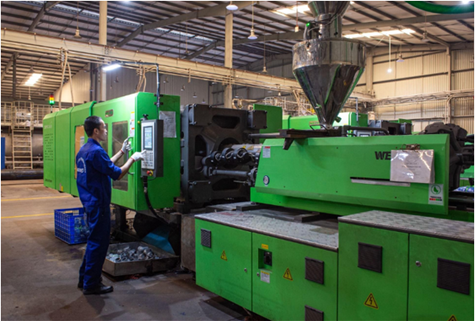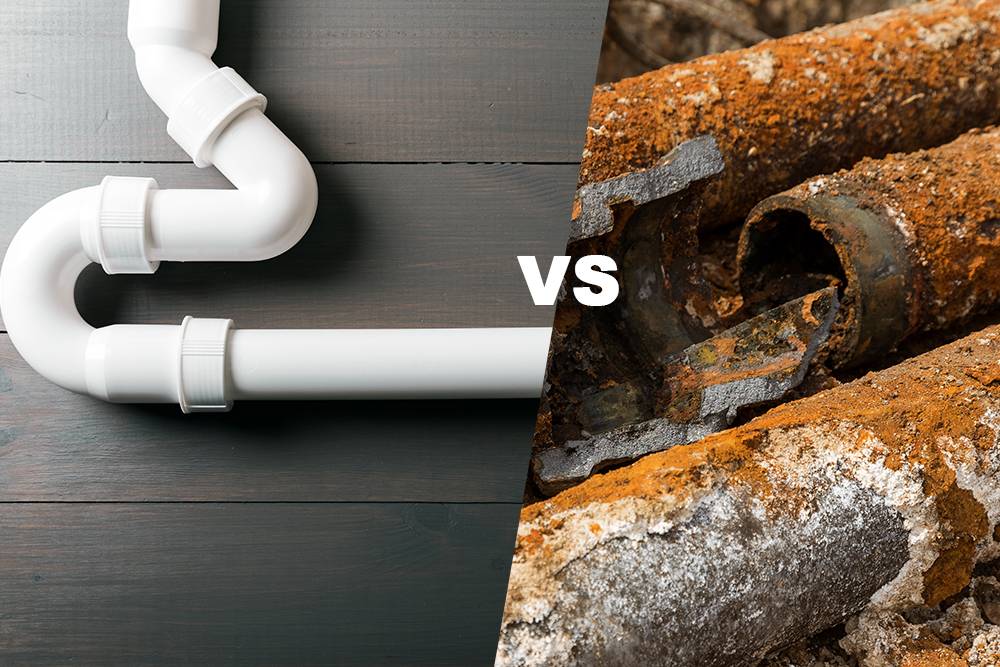
HDPE Pipe Extrusion Process
Whether HDPE pipe is being used for plumbing, circuits, or gas there’s no denying that HDPE pipe are one of the most useful inventions of the modern world. But for all that, we use HDPE pipe most of us don’t know too well how they are made. So today Us Masterbatch will point out some popular methods currently used to produce HDPE pipes.
1. What is HDPE material?
HDPE is high-density polypropylene plastic resin and PE is the short word for polyethylene which is a kind of plastic raw material for the plastic industry. PE normally has three types, which are LDPE, LLDPE, and HDPE.
LLDPE, LDPE are mostly to be used in making a film for packing and making bags, sometimes people also use it to make pipes, but they used to make the garden pipe and very small pipe.
While HDPE is mainly been used in making HDPE pipes, as it has more benfits than other materials as below:
- HDPE pipe has Corrosion resistance
Due to the power to the standard pressure propertises of HDPE, HDPE pipe is not resistant to chemicals and biological growth. So HDPE pipe do not make leakage or blockage problems.
- HDPE Pipe is Flexible
HDPE is flexible, ductile and has excellent fatigue resistance. Unlike other plastic pipes, HDPE pipe is pressure rated to handle water distribution surge events.
- HDPE Pipe is durable
HDPE pipe was claimed to last 50 years, but in fact, the correct life expectancy for the HDPE pipe can stretch up to 100 years, depending on the application, design and installation of HDPE pipe.
- HDPE Pipe has Leak-Free Joints
The traditional metal pipe systems, which re jointed by mechanica joints. HDPE pipe can be joined by butt welding, electrofusion welding, socket welding or extrusion welding. Thanks to that, HDPE pipes are more environmentally friendly and have a longer lifespan.
2. How is HDPE pipe extrusion process made?

The HDPE pipe extrusion process includes the extrusion process, cooling process (including water used, and water losses due to evaporation), hot embossing, conveyor systems, and cutting of pipe, then finishing pipe for using.
Step 1: Mixing and feeding raw material
HDPE pipe extrusion process starts out as pellets, also known as thermoplastic resins.
HDPE pellets mix with recycled materials with colorants and UV protection which are well mixed before adding it to the hopper – plain. The mix ratio depends on the specific application of the HDPE pipes. If the HDPE pipes are going to be buried or used as culverts the need for UV protection is limited, but not excluded as the HDPE pipes will still be exposed to UV during installation.
Step 2: Extrusion
In the next step in the HDPE pipe extrusion process, The combination of compression and screw rotation causes sheer heating. This heat, with the heat of the barrel, melts the HDPE (at a temperature of about 230 degrees Celcius.) By the time it reaches the end of the line, the material is melted down and hot enough to go through the die.
The hot liquid HDPE is then injected into the HDPE pipe mold while applying vacuum pressure for even distribution.

Step 3: Cooling
The molten plastic then flows evenly around the mold to form and results in the diameter of the HDPE pipe. A built-in cooling system hardens the plastic just enough to set the shape HDPE pipe, enabling the HDPE pipe to be extracted from the mold. The pipe then passes through a cold shower to completely harden HDPE pipe.

Conveyor haul off
It is the important step of HDPE pipe extrusion process, because polyethylene has a high specific heat capacity, the pipe must be cooled in stages, to avoid deforming the shape, and by the time it reaches the “haul-off tractor”, it is hard enough to be gently pulled by the 2-3 belts.
Step 4: Cutting
A laser or powder printer prints the size, type, date and manufacturer’s name on the side of the HDPE pipe. It is then cut by a saw cutter, either into lengths of 3 or 6 or 12 or 24 meters (9.8 or 19.7 or 39.4 or 78.7 ft), or it is coiled to 50 or 100 or 200 m (164 or 328 or 656 ft) lengths on a coiler.
Finished HDPE pipe extrusion process
After several HDPE pipe extrusion process steps, all steps run inside the extrusion machine, and eventually, we are able to get the final products of the HDPE pipe. They are distributed to customers for diverse applications.

3. The applications of the HDPE pipe extrusion process
HDPE pipe extrusion process is a very common method and be available for a wide range of applications across the world. There are some major usages we frequently see HDPE extrusion pipe be used.
Civil Engineering
HDPE pipe is used in water mains, service pipes, and sewer reticulation systems. They are also used for making conduits for cables in electrical installations.
Agricultural
HDPE pipe is the perfect solid wall, they are used for irrigation in water supply schemes and suction lines. HDPE pipe are resistant to soil corrosion and salty water making them perfect for drainage and irrigation applications.
Water- supply system
HDPE pipes can be used as water supply pipes in the city, village, home, or factory. But HDPE pipe cannot be used for hot water.
HDPE pipes carry a big share in world’s market and the current trends show a dramatic increase in demand of these pipes in many other applications.
Hope this report gives you the helpful information about HDPE pipes. If you have any questions, please contact:
Ms. Karen- Business Director
📞Whatsapp: +84 867 166 698
✉️Email: karen@usmasterbatch.com







